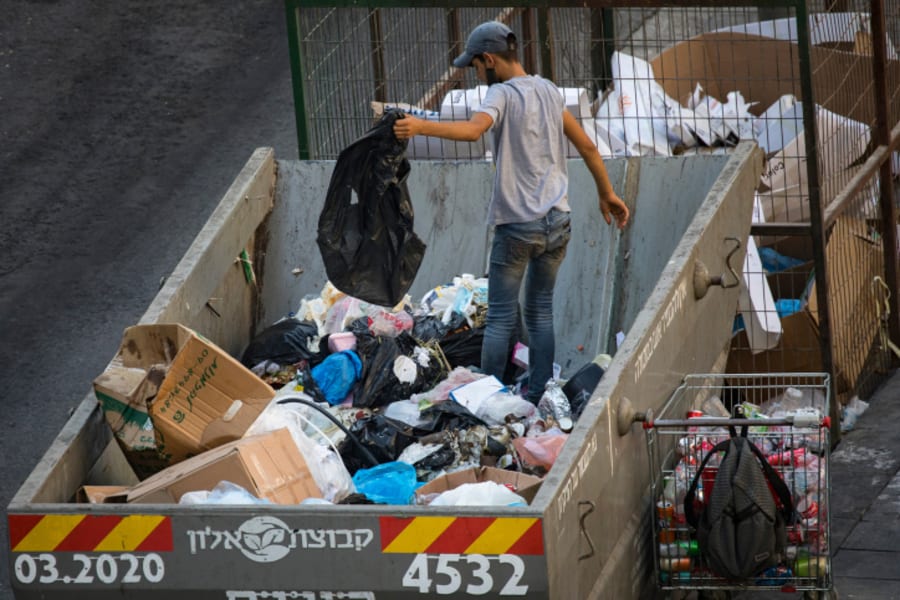Poverty in Israel soars amid COVID-19 pandemic
Number of families living under poverty line rose this year by almost 50% according to report

The number of Israeli families living in poverty has increased by more than a quarter of a million due to the coronavirus crisis, warns The Alternative Poverty Report published early this month by the Latet organization.
The crisis has affected more than half of all Israelis negatively, according to the report, with 422,000 households living in financial hardship and an additional 143,000 households facing food insecurity. Compared to 2019, the percentage of families living below the poverty line has risen dramatically from 20.1% in 2019 (582,000) to 29.3% in 2020 (850,000), said Latet, a non-profit that works to reduce poverty in Israel through welfare and meal services.
“The alternative poverty report for 2020 makes tough, painful reading – one of the hardest we have seen,” said President Rivlin. “The report shows how the coronavirus has turned a health crisis into a broad, deep social and economic crisis. Along with the real impact on the middle class, it is clear that the most vulnerable populations are suffering the most during this period of crisis.”
The Israeli middle class has shrunk by 15.5% since the outbreak of the COVID-19 crisis and less than a quarter of all Israeli households have remained financially unaffected by the crisis.
“We are in the worst economic crisis in the country’s history, which will take Israeli society years to recover from,” said Latet CEO Eran Weintraub, noting that the pandemic erupted as a health epidemic but had developed into an unprecedented socioeconomic epidemic. “We have to stop the bleeding, as hundreds of thousands of Israelis descend from a temporary crisis—due to loss of employment—into a life of poverty from which it is difficult to impossible to recover.”
Even before the outbreak of the pandemic, Israel struggled with some of the highest poverty levels in the OECD, which helps explain why Israeli society was so badly prepared for tackling the current crisis. Before the COVID-19 crisis, approximately one in five Israelis was reportedly living in poverty, almost double the OECD national average. Alongside the United States, Israel also had the largest income inequality in the OECD.
Despite Israel’s reputation as the start-up nation and a global center of innovation, the Israeli middle class has struggled for years due to high costs of living and inadequate salary levels outside the high-tech industry. The imbalance between high costs of living and comparatively low salaries in Israel is largely due to low economic productivity in traditional industries, the proliferation of monopolies and high import tariffs.
Poverty levels are especially severe among Israeli Arabs and Haredi Jews, two minority communities suffering from low levels of employment. While fertility rates have dropped and education and employment levels have risen among Arab Israeli women, barely 50% of Haredi Jewish men have joined the workforce. Overall, the financial strain on Haredi and Arab families in Israel has been further exacerbated by their comparatively low levels of education and disproportionate concentration in low-salary manual industries.
“The sharp rise in poverty confirms the most pessimistic forecasts from the beginning of the crisis and emphasizes the weaknesses of the Israeli eco-system,” said Latet Founder Gilles Darmon. “Corona has tipped the delicate economic balance, putting hundreds of thousands of new families into financial hardship and poverty, but it is the state itself that has actually created the conditions for this fragility by refusing to make significant investments in the past to those families, building their social resilience… If Israeli society continues to be fractured and unequal, I am not sure that the State of Israel has a real future.”

The All Israel News Staff is a team of journalists in Israel.













